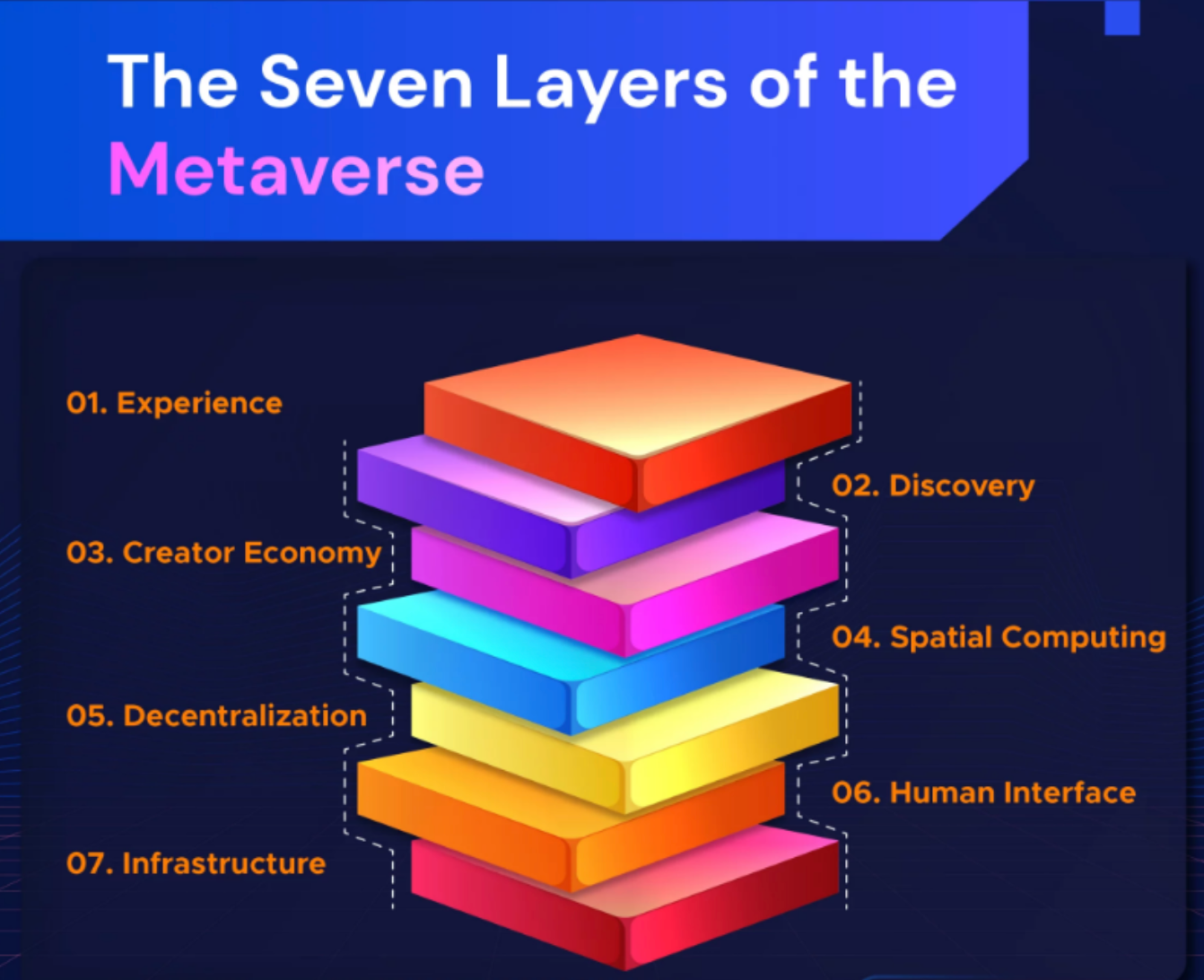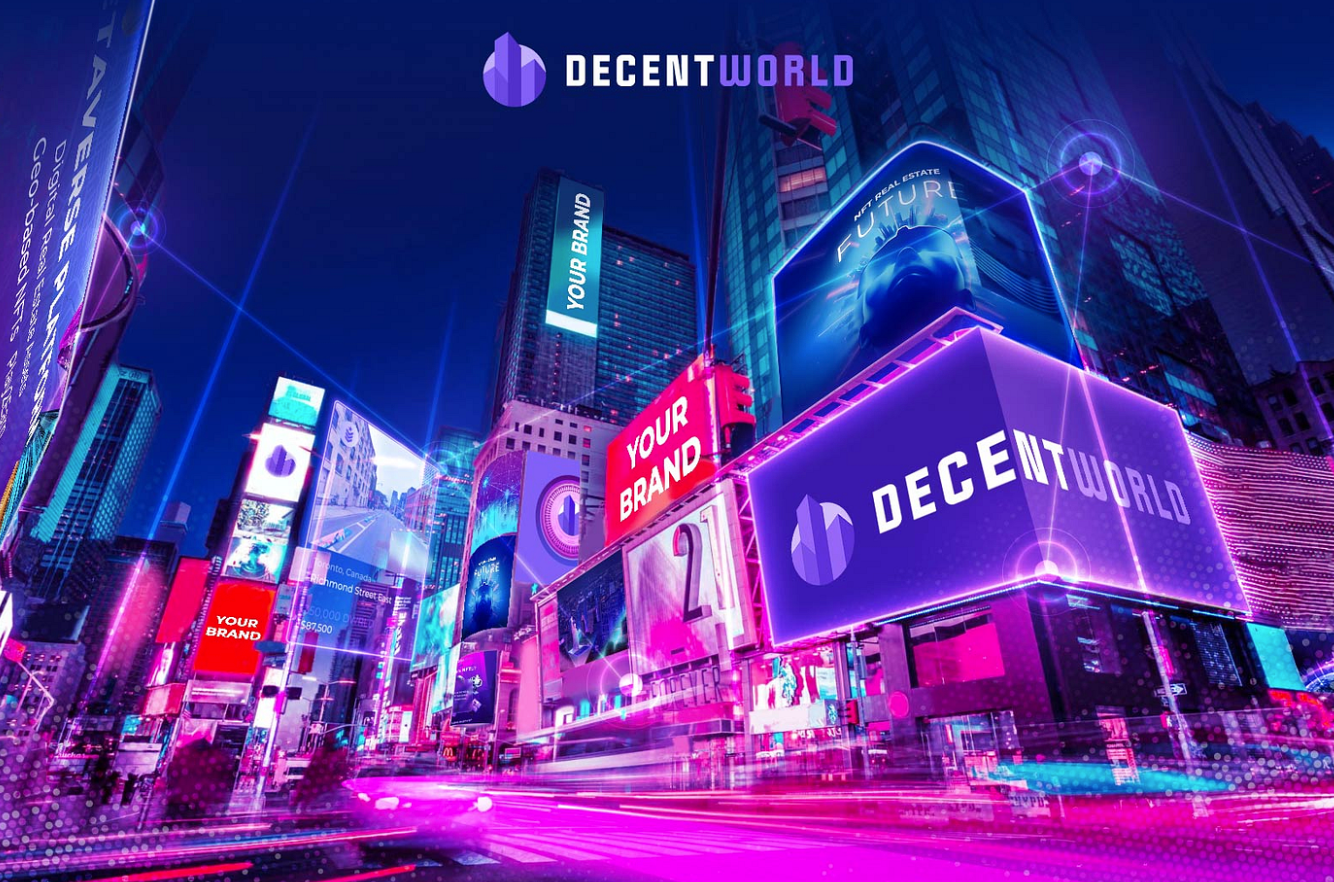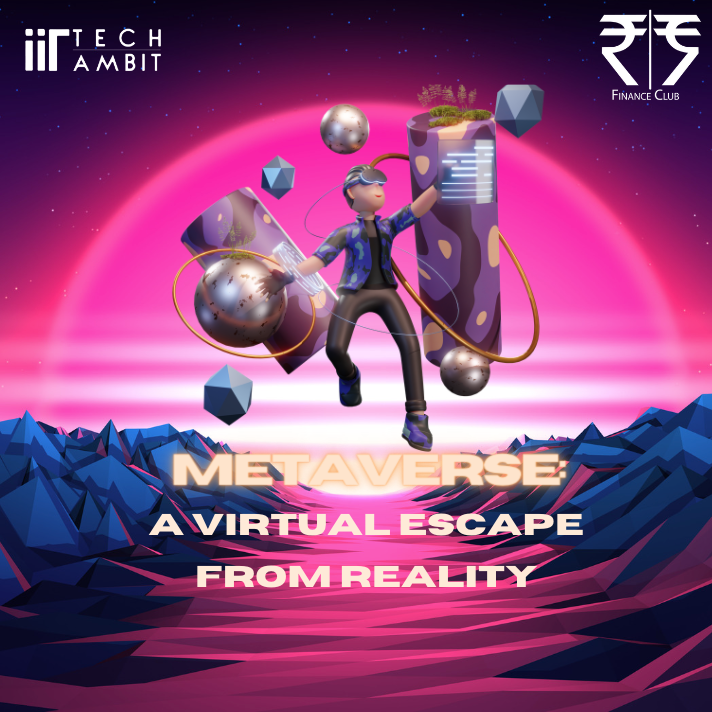Remember the times when Covid had left stadiums deserted? We watched IPL without the people cheering, donning colourful jerseys and paint; an entirely different and somewhat disappointing experience. What if we told you that instead of this underwhelming experience, one could, in fact, recreate the original, thrilling show in the environment from the comfort of your own home? Imagine feeling the adrenaline rush of a stadium filled with cheering fans, the excitement of watching your favourite athletes perform right in front of your eyes, and the thrill of being a part of the action. This is precisely what the future has in store for us. And yes, the future is now!
If ‘Metaverse’ is what strikes you after reading this, you are on the right track. According to the founder of Next-Meet, a Metaverse-based startup,” Metaverse is the breakthrough that will revolutionise the computer industry tantamount to the way the internet did 30–40 years ago.”
Entering The Metaverse
Imagine a world where you can create your own avatar, attend virtual events that mimic real life, and interact with other people’s avatars in a realistic 3D environment — all from the comfort of your own home. Welcome to the Metaverse, an integrated network of several 3D virtual worlds that is set to revolutionize the way we experience digital life. Similar to how websites, search engines, and social media platforms are part of the internet, the Metaverse uses software technology like apps and browsers, along with hardware technology like VR headsets, to create an immersive and stimulating real-life experience. Get ready to dive into a whole new world of endless possibilities!
As we dive into the world of Metaverse, let’s discuss it in seven primary layers.
7 Layers Of Metaverse

From the foundation-building technology to the endless opportunities it presents for creators and entrepreneurs, and finally, the ultimate delivery of immersive and lifelike experiences for the end-users, each layer is more fascinating than the last.
Layer 7 - Infrastructure
Enough of what we can do or enjoy in the metaverse, let’s have a look at how the metaverse is built from the ground up and what advantages it provides us, compared to the traditional internet.
It is a thrilling journey as we venture into developing a product with an implementation as diverse as Metaverse. Have you ever wondered about the technology needed to sustain and further evolve an intricate and closely integrated technology such as the world of Metaverse? For all the following layers to exist, we need an underlying technological and networking infrastructure consisting of 5G and 6G computing that delivers high-quality data quickly to support real-time communication and experiences between users; consequently improving massively on bandwidth and reducing latency.
Four core tenets that power the Metaverse:
- The computing power, spatial positioning algorithms, GPU servers, real-time network transmission (4G, 5G, etc.), and virtual scene fitting
- Artificial intelligence
- Video gaming technologies, including 3D game engines like Unreal Engine and Unity, for the creation of resources such as animations, sounds, and images.
- Blockchain technology is supported by methods to transact in a decentralised manner along with smart contracts.
Layer 6 - Human Interface
The 6th layer of the Metaverse, the human interface, talks about the hardware end of the integration. If the 7th layer is where the magic is created, this is where the real magic happens. It’s the hardware that brings the Metaverse to life, and it’s where we can finally experience this incredible new world.
The hardware generally involves the critical components of VR, AR, and XR. We can’t comment on the future of this layer as there are some uncertain variables like future trends and the costs of the devices are privacy concerns. However, as gadgets get smaller, cheaper, more comfortable, and highly portable, they will soon become a part of our daily life. With other technologies like chip development, heat dissipation, and battery life of electronic devices improving steadily, we can expect the quality and duration of our experience to enhance. It would not be scandalous but prudent to presume that as many companies and business tycoons who are the torchbearers of modern-day electronic innovation step into transforming this business, we will be holding out hearts waiting to be surprised and thrilled with the technology innovating at a fast pace.
Layer 5 - Decentralisation :]
Imagine a world where your privacy is protected, and there are no worries of fraudulent activities or legal disputes. That world is the Metaverse, and it’s powered by the fifth layer, decentralization. With concerns about privacy issues in existing applications and browsers, blockchain technology can be the game-changer to solve this problem. Since Blockchain is a technology that stores information in the form of blocks which cannot be tampered with, one of the applications is crypto-currency.
In Metaverse, cryptocurrency can be an exchange of currency with no worries of privacy, an example of which is Mana, the currency of exchange used in Decentraland (a virtual space). Metaverse is expected to be devoid of a single authority. Creators will have the right to their information and their creations. This can reduce a lot of fraudulent activities and legal disputes following them. The next layer tells us about the vehicles the metaverse provides to create 3D content.
Layer 4 - Spatial Computing
Let’s take a closer look at the fourth layer of the Metaverse, which is spatial computing. This layer is critical for creating a 3D virtual world that is used in the development of Metaverse. Spatial computing technology allows for the visualization of digital content, such as data visualizations and animations, through 3D simulations that optimize actions.
Major corporations such as BMW and Mars are already utilizing this technology. BMW has created a virtual car factory with robots and virtual people to plan the installation of manufacturing technologies, while Mars is using Microsoft’s metaverse stack to digitize its supply chain and improve output.
As technology continues to progress, the quality of real-time data visualization and virtual representations of physical assets and external environments will improve, making simulations more accurate and easier to work with. This opens up an exciting opportunity for an industrial Metaverse sector that is ripe for disruption.
Next, we’ll explore the third layer of the Metaverse, which is the creator economy, and why it will play an important role in the future of the economy.
Layer 3 - Creator Economy
The third layer of the Metaverse, known as the Creator Economy, emphasizes the immense potential for content creation in this virtual world. Unlike the traditional 2D content found on the internet, the Metaverse offers creators a chance to showcase their products and content as digital merchandise in a completely new way. Imagine being able to display your artwork in a virtual art gallery that can be visited by people from all over the world.
Creators can earn substantial revenue in the Metaverse by:
- Displaying and selling their products or content as digital merchandise
- Influencing buyer behavior by having their avatars wear virtual fashion and promoting goods
- Offering unique experiences, such as virtual events, that cannot be replicated in the physical world
The Creator Economy will play a crucial role in the development of the Metaverse, as content creators will be the driving force behind the unique and engaging experiences that will attract users to this virtual world.
Layer 2 - Discovery
How do we discover content catering specifically to us? That’s what the second layer of the Metaverse is about.
This layer is about the spread of information that acquaints users with new experiences. There are two channels to discover content about the Metaverse inbound and outbound discovery. The major channels for inbound discovery include app stores, search engines, and review sites. In contrast, outbound discovery majorly involves display advertising and email.

The classic examples of outbound discoveries are the innovative advertising that the companies have employed in the Metaverse to reach out to the mass audience. One of the primary examples is how Nike created its own virtual world, called Reactland, to go with the release of a shoe called React. They released the shoe React in the virtual world, garnering colossal attention and sales. Such marketing tactics make it easy for users to find products they would want in real life. Targeted ads work in the same way but in a much more elegant and interactive manner.
Marketing strategies will also change more than we usually see on the internet. The Metaverse opens new avenues of data analysis, marketing, and content distribution. How do you hope to be a part of the Metaverse economy and use it for your own good?
Layer 1 - Experiences
At the end of the day, it’s the user experience that matters. Metaverse removes the bounds between the physical and virtual worlds, enhancing the experiences we once thought impossible. Ever wished to attend a concert by your favourite artist who performs on the other side of the globe?
Ever wondered how the experience would be through Metaverse? It would be an exhilarating experience, according to Travis Scott’s fans who witnessed his virtual live show on Fortnite. They got to choose their own outfits and the best spots at the concert venue without worrying about the crowd and logistics of getting there. They got as close to the performer as possible with no hassle. The best part is that the concert can be wild enough to be impossible in real life. Everything seems much more lifelike and immersive, and you feel like you’re actually at the show. The performer appearing on an asteroid, the stage levitating, is possible with Metaverse.
We just witnessed through these layers the potential of the Metaverse and what the future holds for it. Innumerable opportunities are in store, and it is left up to the creators and budding entrepreneurs to exploit each one and create more in this everlasting virtual world space. It is no wonder to see large companies and organisations splurging on the Metaverse. Big companies like Nike invest heavily in marketing their products in this space. The Metaverse has the potential to radically change how we learn, earn, and connect, just like the emergence of the Internet and Computing devices did. However, what if the Metaverse fails? What if the Metaverse is just hype, a giant bubble we all are trapped in and might be just a prick away from popping? Let’s understand why some people believe Metaverse is not worth the hype.
Is Metaverse worth the hype?
Keeping the logistical and technical limitations aside, the first question is, “Do we need ‘Metaverse’? Particularly in developing low and middle-income countries that believe in technology that disrupts positively, rather than something that is just fancy. Let’s admit it; we are fine without Metaverse. It isn’t solving any world problem, so will it ever be widely adopted?
Even if we assume that Metaverse will be adopted, we cannot overlook that the Blockchain, which many nations worldwide haven’t yet adopted, forms the basis of it. The recent cryptocurrency crash has prompted many inquiries about the dangers of decentralised systems. Security and privacy in Metaverse are other issues that are raised. It is unclear how confidential information will be safeguarded in a virtual environment where people are represented by avatars.
The two leading technologies powering Metaverse-augmented reality and virtual reality serve as the interface. Even the most ardent VR headset supporters readily concede that they’re best enjoyed in moderation and that VR is more of an addition than a substitute to contemporary gaming. Even if we accept this truth, we still have to face the fact that certain headsets are more expensive than televisions. As a result, the costs associated with adopting AR and VR to fully experience Metaverse would prevent its widespread acceptance and make it unavailable to developing nations.
The ability to hold virtual meetings was the unique selling point of Facebook’s launch when it changed its name to Meta. Do you remember the last time you had fun during a digital session? Our Zoom meetings would only differ in the Metaverse if they took place in a 3D space with virtual characters. The experience would not be significantly different from what we had in a Zoom meeting once we got used to it, although it might initially sound fascinating. By providing a clever solution to a challenging issue — staying connected — Facebook attracted the attention of about 25% of the world’s population. However, it is now attempting to develop a fix for an issue that does not exist.
Conclusion
We have attempted to give you an insight into what Metaverse is and show you both sides of the coin. Since we’ve drawn parallels between the IT Revolution and what the world feels is the next big technological revolution, we leave it up to our readers to explore this new technology and exploit the plethora of opportunities it has in store.

